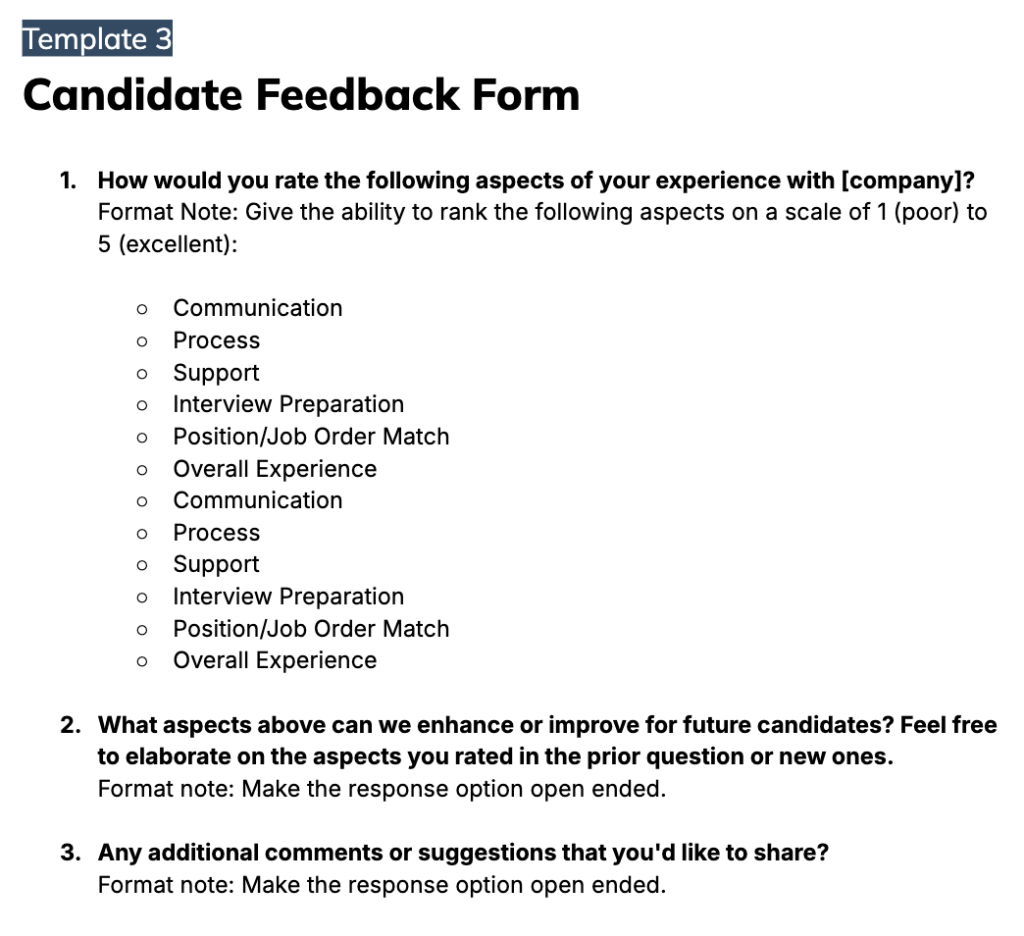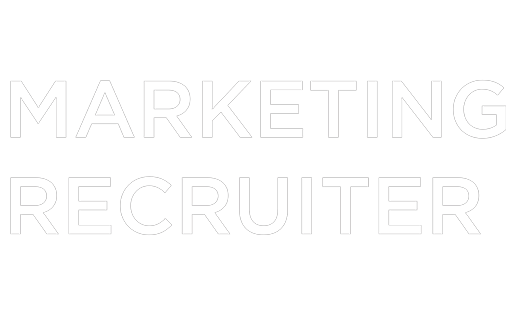What's Ahead in this Playbook:
When it comes to building a more future-ready business, organizations must rely on their ability to attract top talent. The problem is that most hiring managers struggle to get the best candidates in the door.
If you’re looking to break this cycle and find better talent, this three-part playbook is the blueprint you’ve been waiting for.
Dive into the three critical parts of recruiting – strategy, process, and communication – to gain actionable insights, tested templates, and expert advice from seasoned hiring managers.
Part 1: Crafting a Winning Recruitment Strategy
Learn how to create robust hiring roadmaps that drive leadership buy in, align internal efforts, and form effective recruitment strategies.
Part 2: Creating a Seamless Candidate Experience
Establish a repeatable process that streamlines applicant screening, prepares interviewers, and leaves a positive impression on candidates.
Part 3: Securing New Hires + Maintaining Company Reputation
Understand how to communicate with every candidate in a way that protects your brand and improves your hiring process via feedback.
PART 1
Crafting a Winning Recruitment Strategy
Step 1.1: Get internal approval by selling the need.
💬 Where to Start: Be ready to make your case.
When you seek leadership approval for a new position, be ready to make your case and articulate things like:
- What the role is and how it supports your team/company goals (ex. projected revenue to be earned or saved)
- Why the role can’t be handled by current team members or someone internally via promotion, lateral transfer/shift, etc.
- What’s at stake if you don’t create or fill this role
💥 Action Item: Start to think through recruitment needs.
Start thinking about the costs and benefits of hiring internally vs. using an external recruitment partner. The costs and benefits of doing it yourself vs. hiring an external recruiter will depend on things like specificity of expertise, market/candidate demand, historical challenges filling the role, and internal recruitment team structure and resources. In step 4, there is more detail to help you make that decision.
💡 MMR Ambassador Insight: New Hire Approvals
What lessons or insights would you share with a hiring manager seeking internal approval for a new hire?
“To effectively justify the need for a new position, the hiring manager must think like a CEO or CFO. Start by looking at the landscape of your business. What matters the most to your CEO and CFO? This will help you draft your justification.
Don’t forget to dive into the financial side of things. How can this hire save the business money now? In the future? Also, how can you get the most out of the budget for this hire? For example, can you make 2 junior hires for the price of 1 senior hire?”

Jenni McDonough
Chief People Officer at Alloy
Step 1.2: Paint a clear picture of what you’re looking for.
💬 Where to Start: Outline the need.
Before you start writing the job description, think through:
- What will a typical day look like?
- What 3 things do you want your new hire to accomplish in their first year?
- What specific metrics and measurements will inform you that you made the right hire in 6 months? 12 months?
💥 Action Item + ✅ Template
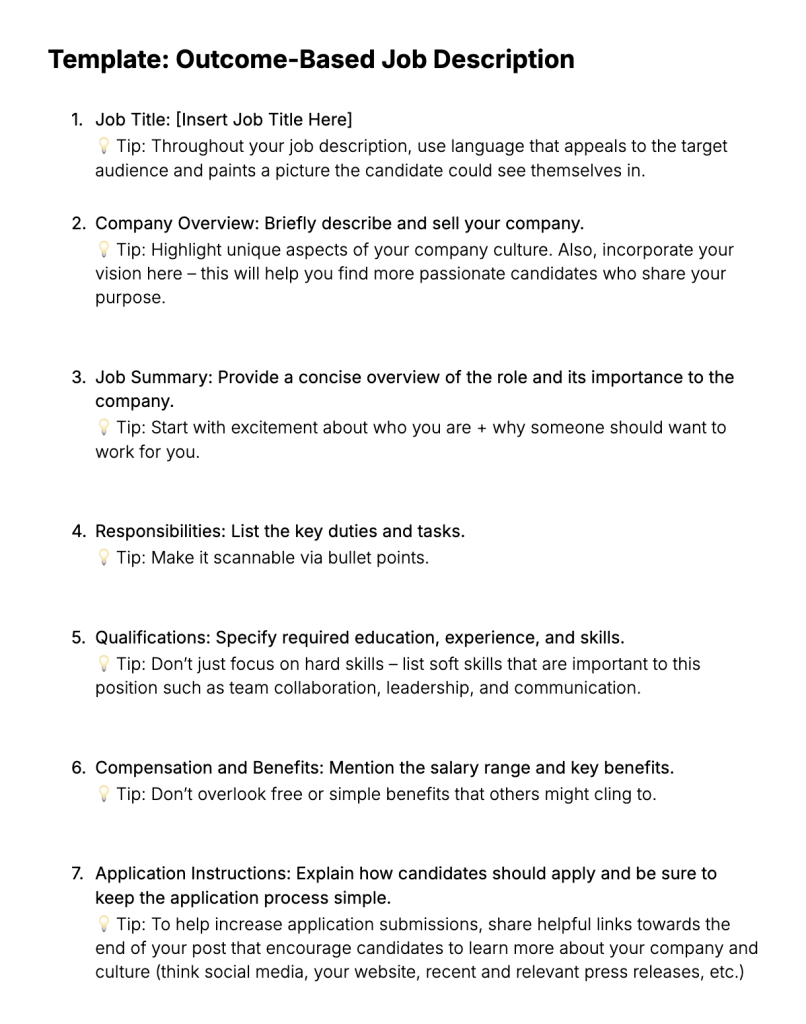
💡 MMR Ambassador Insight: Competitive Salaries 101
How do you establish a competitive salary for a new position?
“Generally, you need to start with what the business can afford. If it’s under what the market bears, you may consider hiring a more junior person. To identify a competitive salary range, leverage guides published by industry trade groups. You can explore salary figures on sites like Glassdoor and Indeed to get a general sense, but keep in mind that self-reported data can be less reliable and should be used with caution. Also, don’t forget to consider the role’s geographic location. For example, a position in a small town with a lower cost of living should pay less than one in New York City. ” – Jenni McDonough (Chief People Officer at Alloy)
Step 1.3: Get everyone on the same page internally.
💬 Where to Start: Identify anyone who will be involved in the hiring process.
Identify anyone who will be involved in the hiring process. This includes decision makers, influencers and other stakeholders who may or may not speak with candidates. Define what their involvement looks like during the recruitment, interview and hiring process.
💥 Action Item: Schedule a kickoff meeting with this group + prepare for it using the template in the next section.
Suggested format: 30-45 minutes named Kick Off for (Insert Title)”
💡Tip: Maximize everyone’s time by sending the following before hand:
- Job Description: Ask that everyone review it ahead of the meeting.
- Other Role Details: Hiring manager’s name + team/department.
- Agenda: Share a condensed version of what you want to discuss ahead of time.
- Process + Roles: Share an overview of who will be involved in the recruitment, interview and hiring process and what their roles and responsibilities will look like.
✅ Template: “New Role Kick Off Meeting” Agenda
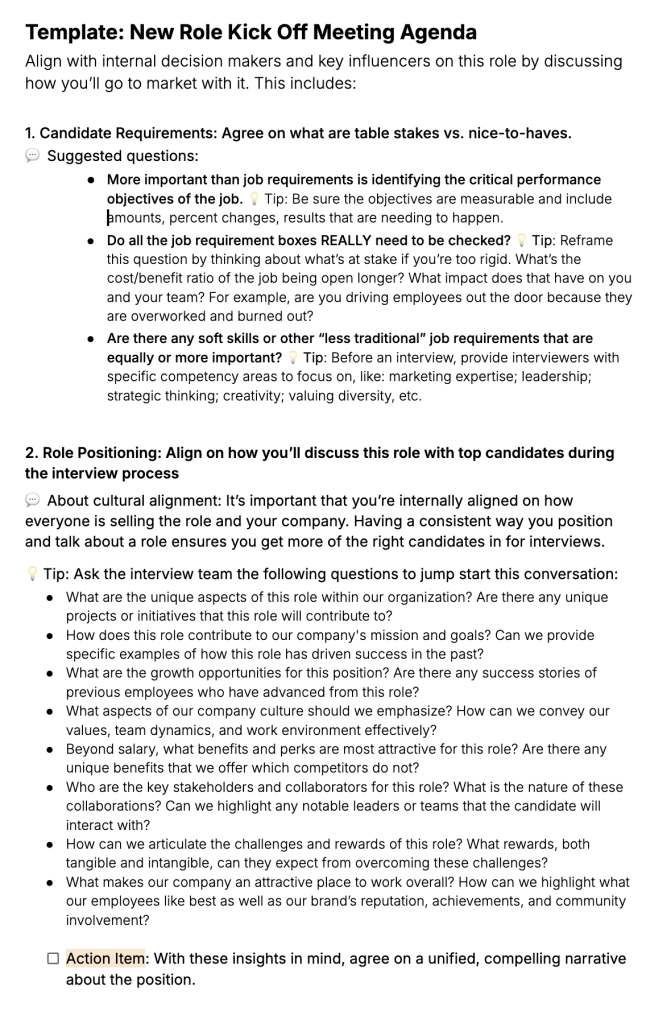
Step 1.4: Define your recruitment strategy for finding + attracting the best talent possible.
💬 Where to Start: Understand the costs and benefits of recruiting yourself vs. hiring a pro.
HR Team
- Pros: Manages a broad range of tasks and is a more cost effective solution.
- Cons: Lacks the necessary recruitment expertise and networks, so candidate quality and options tend to be lower.
Internal Recruiter
- Pros: Dedicated solely to recruitment of your organization. Typically more specialized in hiring than an HR generalist.
- Cons: Concurrently helps multiple managers fill roles and has limited expertise and bandwidth for sourcing, vetting, and finding the best candidates.
External Recruiter
- Pros: Focused on your open position, and yields higher quality candidates and faster placements due to their larger, more diverse network of specialized candidates and ability to contact inactive job seekers at your competitors (who you wouldn’t otherwise know about.)
- Cons: Many recruiters are focused on quick commissions instead of long term partnerships, so it’s essential to find a partner like My Marketing Recruiter who is as invested in your and your company’s long term success as you are.
💥 Action Item: Decide if you’ll leverage your HR team, a dedicated internal recruiter or an external recruiter.
💡 MMR Ambassador Insight: Recruiting Don'ts
What should organizations keep in mind when using an external recruiter during the hiring process?
“Don’t farm out a job to 10 different recruiters. This dilutes your brand and is a bad look within the marketplace. One time, I was contacted by 3 different recruiters in the same week for the same job. It made me wonder if the company knew what they were doing. It was also a waste of my time and the recruiters’ time because I wasn’t interested.”
– Jenni McDonough (Chief People Officer at Alloy)
PART 2
Creating a Seamless Candidate Experience
Step 2.1: Create/post the job description + sort through applications.
💥 Action Items + ✅ Templates
- #1: Create an outcome-based job description (shown right.)

- #2: Post your job description.
- #3: Sort through applications to find the best possible talent.
💬 Tips: Screening Resumes + Applications in an Effective, Organized Manner
- Leverage an applicant tracking system (ATS) to automate and streamline your application sorting process. These systems allow you to use keyword tagging for skills, experiences, and education to quickly sort for top matches.
- Look for narrative indicators of success. Focus beyond keywords and look for patterns in a candidate’s resume that show growth, leadership, adaptability, and achievements, which can indicate how they might contribute to your team. Preliminary screening tools – like questionnaires – can be a great way to determine fit early on.
- Track candidate progress using your favorite PM tool. Every marketer loves a good project tracking system. Use your favorite tools like Trello, Asana, or ATS features for tracking applicant status (e.g., review pending, first interview completed, second-round invite sent). Use shared dashboards to keep everyone on the same page.
- Communicate updates in a timely manner. Develop automated responses/templates to keep candidates updated. Avoid long silences, which could lead top talent to accept other offers.
Step 2.2: Coordinate interviews with candidates + internal interviewers.
💥 Action Item
- #4: Establish a system for coordinating interviews with candidates and interviewers that’s communicative and easy to take action on.
💬 Tips: Effective Interview Coordination
- Centralized scheduling: Tools like Calendly or Doodle can help coordinate interviews without endless email back-and-forth. Make sure your scheduling process is candidate-friendly.
- Transparent candidate communication: When scheduling, provide clarity on how many interview rounds they can expect, the expected timeline, and next steps.
- Interviewer Communications – content to include:
- Candidate Information and Resumes: Include a concise brief for each interviewer with the candidate’s resume, the role they’re applying for, and relevant notes on why they were selected for an interview.
- Position Details: Outline key qualifications, the job description, and share insights into the role’s external positioning. This could include details on how the position fits within broader company initiatives.
- Interview Panel Information: Share who the interviewers are, their roles, and any specific aspects of the job they will be focusing on during the interview (e.g., one interviewer focusing on technical skills, another on culture fit).
Step 2.3: Ensure your internal interviewers are well prepared and aligned.
💥 Action Items + ✅ Templates
- #5: Establish a formal interviewer training program.
Customize the program to your organization’s needs by leveraging the Interview Training Topics template here.
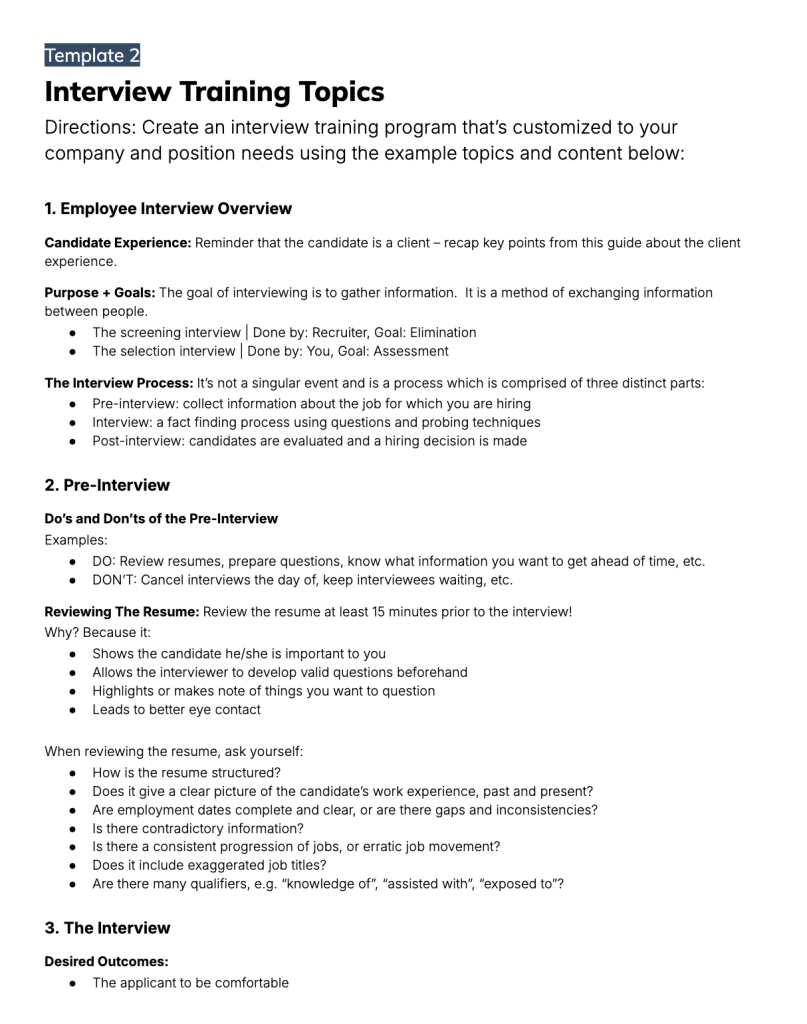
- #6: Create interview questions custom to your organization + role needs.
Customize the questions by leveraging the Interview Questions template here.
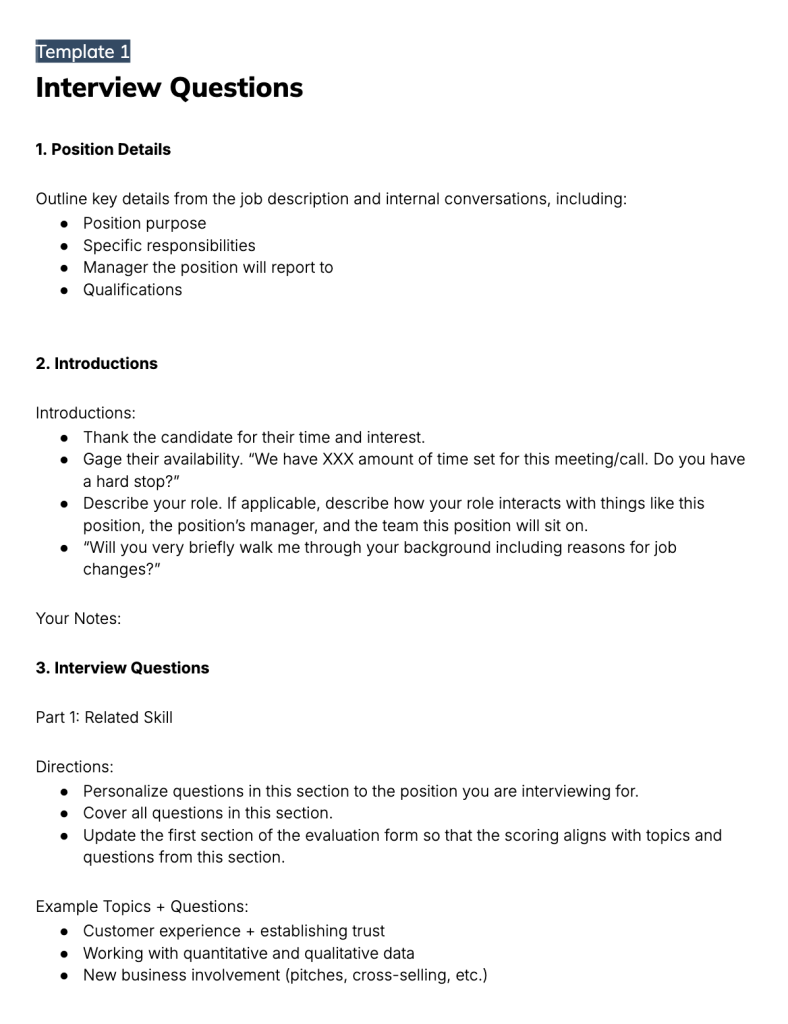
- #7: Create an interview evaluation form.
Customize the form by leveraging the Interview Evaluation Form template here (and don’t forget to align the form to match your interview questions!)
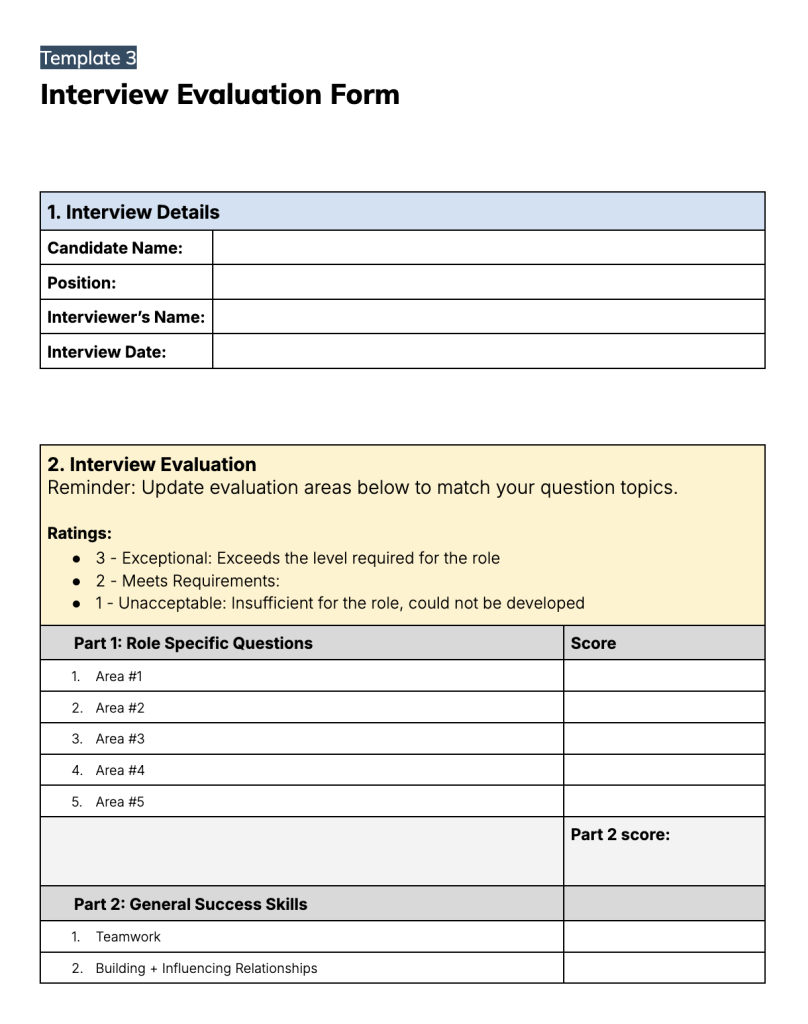
💬 Tips + Insights: Creating an Interview Training Process + Program
Establish formal interviewer training
Especially if you’re engaging new interviewers, create a standard training program that includes legal considerations, best practices, and tips on handling various interview styles (e.g., behavioral, technical).
Suggested Training Materials
1. Candidate Experience 101
Why It Matters: Train your interviewers on the importance of providing consistent and positive experiences to every candidate.
How to Do It: This includes creating a welcoming atmosphere, being punctual, and giving candidates enough time to answer questions. Avoid rushed or overly critical interviews.
2. Preparation
Research candidates thoroughly: Instruct interviewers to research the candidate’s background, LinkedIn, and portfolio ahead of time to ask meaningful questions.
Review resumes with intention: Guide interviewers to identify potential red flags or areas for deeper exploration based on the candidate’s experience.
Legal considerations: Ensure all interviewers understand what’s legally permissible and what’s off-limits in terms of questions.
3. Process + Roles
Interview formats/styles: Should it be a panel, one-on-one, or a mix of technical and behavioral questions? Discuss the pros and cons of various interview types and formats.
Suggested Questions: Prepare a bank of questions that align with the role’s requirements, company values, and the specific team culture.
Panel Structures: Outline the roles of each interviewer in a panel setting, ensuring they know what to ask and how their role supports the overall evaluation.
4. Evaluation
Scorecard Use: Create scorecards based on the skills and experiences required for the role. This allows for objective evaluation and eliminates reliance on gut feelings.
Note-Taking: Provide templates for consistent note-taking and encourage the interviewers to focus on examples, candidate responses, and potential gaps.
Avoid Bias: Train interviewers to recognize and minimize unconscious bias, whether it’s affinity bias (favoring those similar to themselves) or halo effect (letting one strong aspect overshadow other qualities).
5. Other Tips and Best Practices
Consistency is key: Ensure every candidate gets the same experience. Follow the same interview format and make sure everyone is evaluated on the same criteria.
Provide a welcoming environment: Have someone greet the candidate at the door (or on the video call), offer them water or coffee, and make small talk to help ease any nerves.
Follow-up: End interviews by setting expectations for the next steps. Follow through with timely feedback, even for candidates who won’t be moving forward.
PART 3
Securing New Hires + Maintaining Company Reputation
Step 3.1: Finish candidate evaluations + debrief with the entire interview team.
💥 Action Item: Complete the "Interview Scorecard" template within 24 hours.
Then, share it with interview process leads and set up a time to discuss feedback as a group.
✅ Template: Interview Scorecard
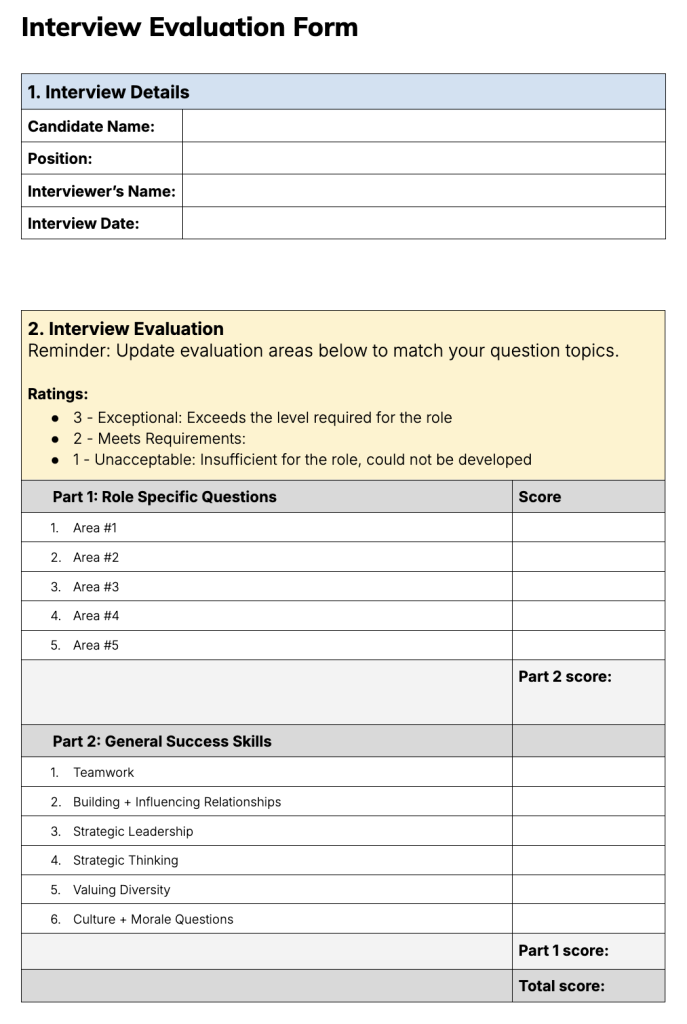
Step 3.2: Communicate final decisions to all candidates in a timely manner.
Candidates Who Are Not a Fit:
💥 Action Item + ✅ Template:
1. Send a “No Thank You” Email using the template below.
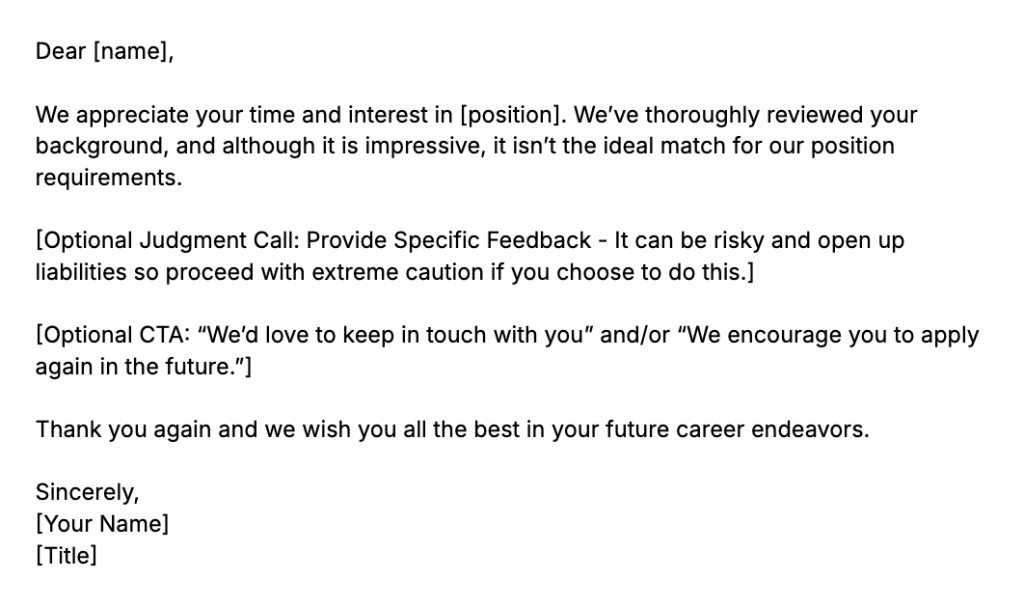
First Choice Candidates:
💥 Action Item + ✅ Template:
1. Begin checking references.
2. Have HR make a verbal offer and send an offer letter using the template below.
→ If they accept: Have the hiring manager follow up after with an email showing their excitement.
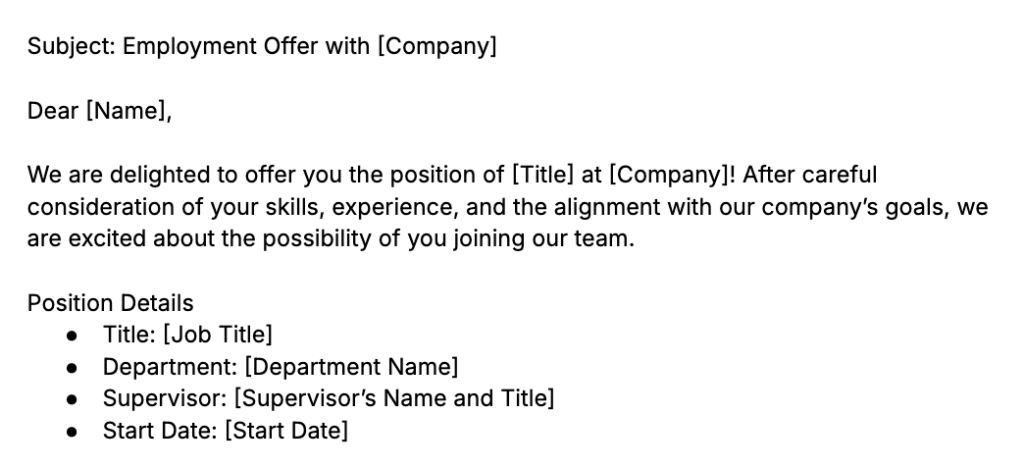
Second Choice Candidates:
💥 Action Items + ✅ Templates:
1. Let them know you are in the evaluation process and give a window of when they can expect to hear from you again.
2. Follow up once you hear from your first choice.
→ If your first choice declines: Send an offer letter using this template.
→ If your first choice accepts: Send a “No thank you” email using this template.
Step 3.3: Collect feedback from all interviewed candidates to help improve your process.
💥 Action Item: Send each candidate a feedback survey after they reply to your offer or denial communications.
✅ Template: Candidate Feedback Survey
